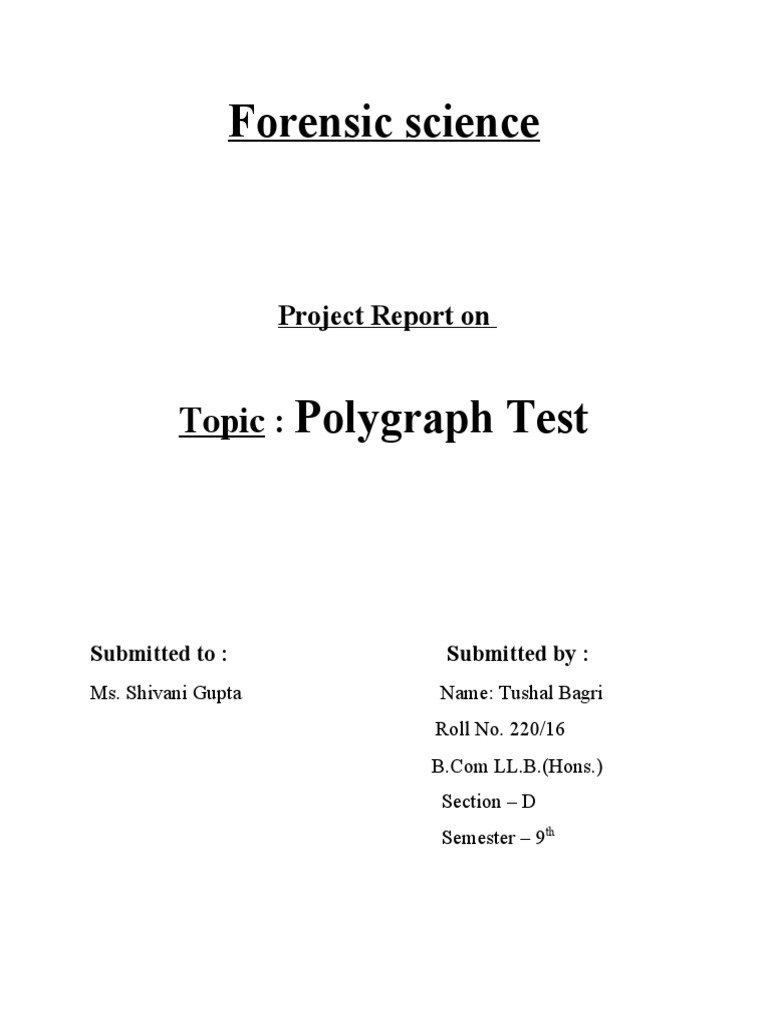Embarking on a forensic science project for a science fair can be a captivating journey into the world of crime scene investigation, laboratory analysis, and the pursuit of justice. The key to a successful project lies in meticulous planning, rigorous experimentation, and a clear presentation of findings. Here’s a comprehensive guide to navigating the multifaceted landscape of forensic science project development.
I. Project Ideation and Scope Definition: Laying the Groundwork for Inquiry
The initial phase involves brainstorming potential project topics. Consider your interests and the available resources. A compelling forensic science project often revolves around a specific question or hypothesis that can be tested through experimentation or analysis. Possibilities are copious, spanning diverse sub-disciplines within the forensic domain. Let us delve into some specific suggestions that may ignite your scientific curiosity:
- Fingerprint Analysis: This timeless technique can be explored by examining the minutiae of latent fingerprints, analyzing different development techniques on various surfaces (e.g., porous vs. non-porous), or even creating a novel fingerprint classification system. Experiment with dusting powders and chemical developers to observe which method yields the clearest prints on different materials.
- Blood Spatter Analysis: Recreate blood spatter patterns under controlled conditions. By varying the height, angle, and velocity of simulated blood droplets, one can correlate the resulting spatter patterns to the events that precipitated them. This involves meticulous measurement and documentation of spatter dimensions and angles.
- Soil Analysis: Soil composition varies drastically depending on geographic location. By analyzing soil samples from different areas using techniques like particle size analysis, pH testing, and microscopic examination, one can determine the provenance of a soil sample found at a hypothetical crime scene. This can be further enhanced by examining the microflora and fauna present within the soil matrix.
- Hair and Fiber Analysis: Microscopic examination of hair and fibers can provide valuable clues in criminal investigations. Compare and contrast different types of hair (human vs. animal) or fibers (natural vs. synthetic) under a microscope. Document the morphological characteristics, such as scale patterns on hair and cross-sectional shapes of fibers. Conduct burn tests to differentiate between fiber types.
- Document Examination: Explore the techniques used to analyze questioned documents. This could involve examining handwriting characteristics, analyzing paper composition, or detecting alterations or forgeries. Consider utilizing tools such as oblique lighting, magnification, and chemical analysis to reveal hidden details.
- Toxicology: Investigate the effects of various toxins on biological systems. While ethical considerations prohibit direct experimentation on living organisms, you can simulate toxicological effects using chemical reactions or computer modeling. Research the common toxins encountered in forensic toxicology and their mechanisms of action.
II. Literature Review: Navigating the Forensic Corpus
Once a topic is selected, it’s imperative to conduct a thorough literature review. Scour scientific journals, textbooks, and reputable online resources to gain a comprehensive understanding of the existing knowledge base related to your project. This will not only inform your methodology but also help you refine your research question and formulate a testable hypothesis.
III. Materials and Methods: Devising a Robust Protocol
The materials and methods section is the cornerstone of any scientific project. It should provide a detailed, step-by-step account of the procedures used in your experiment or analysis. This ensures reproducibility and allows others to evaluate the validity of your findings. List all materials and equipment required, including specific quantities and concentrations. Describe the experimental setup, controls, and variables being manipulated. Be precise and meticulous in your descriptions, avoiding ambiguity.
IV. Data Collection and Analysis: Unveiling Patterns and Trends
Data collection should be systematic and well-documented. Use standardized procedures and record all observations meticulously. Organize your data in tables, graphs, and charts to facilitate analysis. Statistical analysis may be necessary to determine the significance of your results. Identify any potential sources of error and discuss their impact on your conclusions. Ensure that your data supports or refutes your initial hypothesis.
V. Results and Discussion: Interpreting the Evidence
Present your findings in a clear and concise manner. Describe the patterns and trends observed in your data. Discuss the implications of your results in relation to your research question and the existing literature. Compare your findings to those of previous studies. Acknowledge any limitations of your project and suggest areas for future research. The discussion section is where you demonstrate your critical thinking skills and your ability to synthesize information.
VI. Conclusion: Synthesizing Findings and Answering the Initial Question
Summarize your key findings and reiterate your conclusions. State whether your hypothesis was supported or refuted by your data. Emphasize the significance of your project and its potential applications in the field of forensic science. Offer insights into the broader implications of your research. The conclusion should provide a succinct and compelling overview of your project’s contributions.
VII. Presentation: Conveying Scientific Acumen
The presentation is your opportunity to showcase your hard work and scientific understanding. Prepare a visually appealing display board that summarizes your project’s key components: hypothesis, methodology, results, and conclusions. Practice your oral presentation and be prepared to answer questions from judges and attendees. Speak clearly and confidently, demonstrating your mastery of the subject matter. Consider using multimedia elements, such as videos or animations, to enhance your presentation. Remember, effective communication is paramount in the dissemination of scientific knowledge.










Leave a Comment